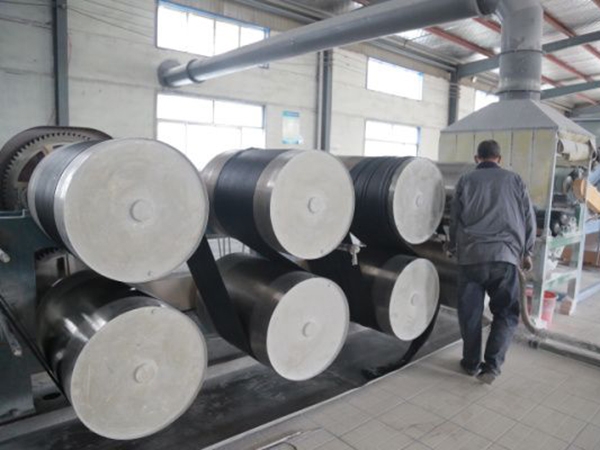Overview
The complete naming of wires and cables is often complicated, so people sometimes use a simple name (usually the name of a category) in combination with the model specification instead of the full name, such as "low voltage cable" for all plastic insulated power of 0.6/1kV class. cable. The wire and cable type spectrum is relatively perfect. It can be said that as long as the standard model specifications of the wire and cable are written, the specific product can be specified, but what is its complete name?
The naming of wire and cable products has the following principles:
1. Content included in the product name
(1) Product application or size class name
(2) product structure materials or types;
(3) Important or additional features of the product
Basically named in the above order, sometimes in order to emphasize important or additional features, the features are written before or before the corresponding structure description.
2, the order of structure description
The product structure is described from the inside to the outside: conductor -> insulation -> inner sheath -> outer sheath -> armored type.
3, simplified
In the case of no confusion, some structural descriptions are written or abbreviated. For example, aluminum conductors are not allowed in automobile wires and cords, so conductor materials are not described.
Case:
Flame-retardant copper core XLPE insulated steel tape armored PVC sheathed power cable with rated voltage of 8.7/15kV
"Rated voltage 8.7/15kV" - use occasion / voltage level
"Flame retardant" - emphasized characteristics
"Copper core" - conductor material
"Crosslinked Polyethylene Insulation" - Insulation
"Steel belt armor" - armor layer material and type (double steel belt gap wrapping)
"PVC sheath" - inner and outer sheath material (the inner and outer sheath materials are the same, save the inner sheath material)
"Power cable" - the name of the product category
The corresponding model is written as ZR-YJV22-8.7/15. The model is written as described below.
4. The uppercase of the first letter of Chinese Pinyin indicates the type of insulation, conductor material, inner sheath material and structural features. For example, Z stands for paper (zhi); L stands for aluminum (lv); Q stands for lead (qian); F stands for phase separation (fen); ZR stands for flame retardant (zuran); NH stands for fire resistance (naihuo).
5. The number of outer sheaths is represented by numbers and has two digits. No number represents no armor layer, no outer layer. The first digit indicates the armor and the second digit indicates the outer quilt, as indicated by the thick steel armor fiber.
6. The cable type is generally arranged according to the arrangement of the cable structure: insulating material; conductor material; inner sheath; outer sheath.
7. Cable products are indicated by model, rated voltage and specifications. The method is to add the rated voltage, the number of cores and the nominal cross-sectional area after the model number.
List
RV, RVV, RVVP, RVVY, RVVYP, KVVRP, (N) 2YSLC, ZR-RE, ZR-REE, ZR-REEP, PUR, LIYY, LIYCY, LIYY (TP), LIYCY (TP), LI2YCY, PIMF, LIHH , LIHCH.
characteristic
CEF - Ethylene-propylene rubber insulated neoprene sheath, marine flame retardant power cable.
CVV - PVC insulated, PVC sheathed marine flame retardant power cable.
Oxygen cabin wires often use BV, BX, RV, RVV series wires, of which:
BV - copper core PVC insulated wire, long-term allowable temperature 65 ° C, minimum temperature -15 ° C, working voltage AC 500V, DC 1000V, fixedly laid indoors and outdoors, can be applied or dark.
BX - copper core rubber insulated wire, the maximum temperature is 65 ° C, applied indoors.
RV - PVC insulated single-core cord, the maximum operating temperature is 65 ° C, the minimum operating temperature is -15 ° C, the working voltage is AC 250V, DC 500V, used for internal wiring of instruments and equipment.
RVV - copper core PVC insulated and sheathed flexible wire, allowing long-term operating temperature of 105 ° C, working voltage AC 500V, DC 1000V, for wet, high mechanical protection requirements, often moving and bending occasions.
Common model
VV means: PVC insulation (first V), PVC sheath (second V)
YJV22 means: cross-linked PVC insulation (YJ), PVC sheath (V), steel tape armor (22)
Models with "ZR" or "FR" are flame retardant cables (wires). Add "L" to aluminum wire
The wire type is simpler:
BVV--PVC insulated and sheathed copper core wire,
BV--PVC insulated copper core wire,
BVR--PVC insulated copper core cord,
BX--rubber insulated copper core wire,
RHF--chloroprene rubber copper core cord.
Calculation formula editing
Cost calculation formula
YJV cost price calculation formula
The cost price formula of YJV copper core power cable series is as follows:
Copper weight X copper price calculation:
Wire diameter ÷ 2 = 1.25X1.25X3.14 = square number X number of wires X0.89X copper price + 10% processing fee at that time.
Cost price calculation formula for rubber cable
Square X1.83 = weight of copper X copper price at the time + rubber price (weight X 0.4 yuan / kg) = cost price + 10% processing fee
Cable price = manufacturing material cost + fixed fee + tax + business fee + profit
Manufacturing material cost = material cost * (1 + material consumption) (material cost is the theoretical calculated value)
The fixed fee varies according to the situation of each company, and generally includes production wages, management wages, utilities, repairs, depreciation, rent, and transportation costs.
Current carrying capacity calculation formula
Estimate
Multiply by 9.5 and multiply by nine.
Thirty-five by three-five, and the two groups are reduced by five.
The conditions have been changed and converted, and the high temperature ninefold copper upgrade.
The number of tubes to be worn is two to three, and eighty-seven percent is full of current.
Note: The current carrying capacity (safety current) of various insulated wires (rubber and plastic insulated wire) is not directly indicated in this section, but is expressed by "multiplied by a certain number of sections", which is calculated by mental arithmetic. It can be seen from Table 5 3 that the multiple decreases as the cross section increases.
Multiply by 9.5 and multiply by nine.
"Twenty-five times down to nine, go up one minus one" is said to be 2.5mm' and below various cross-section aluminum core insulated wires, the current carrying capacity is about 9 times the number of sections. For example, a 2.5 mm' wire has a current carrying capacity of 2.5 x 9 = 22.5 (A). The multiple of the current carrying capacity and the number of cross-sections from the wires of 4 mm' and above is lined up along the line number, and the multiples are successively decremented by 1, that is, 4 × 8, 6 × 7, 10 × 6, 16 × 5, 25 × 4.
Thirty-five by three-five, and the two groups are reduced by five.
"Thirty-five times by three-five, two pairs of points minus five", said that the 35mm" wire current carrying capacity is 3.5 times the number of sections, that is, 35 × 3.5 = 122.5 (A). For wires of 50mm' and above, the multiple relationship between the current carrying capacity and the number of sections becomes a set of two two line numbers, and the multiples are successively reduced by 0.5. That is, the current carrying capacity of the 50, 70 mm' wire is 3 of the number of sections. Double; 95, 120mm" wire current carrying capacity is 2.5 times the number of its cross-sectional area, and so on.
The conditions have been changed and converted, and the high temperature ninefold copper upgrade.
"The conditions have been changed and converted, and the high temperature ninefold copper upgrade." The above-mentioned port is determined by an aluminum core insulated wire and a plain coating at an ambient temperature of 25 ° C. If the aluminum core insulated wire is applied in an area where the ambient temperature is higher than 25 °C for a long time, the current carrying capacity of the wire can be calculated according to the above-mentioned calculation method of the mouth, and then 10% of the wire can be used; when the aluminum wire is used, the copper core insulated wire is used. Its current carrying capacity is slightly larger than that of the aluminum wire of the same specification. The current carrying capacity of one wire number can be calculated by the above-mentioned port method. For example, the current carrying capacity of a 16mm' copper wire can be calculated as a 25mm2 aluminum wire.
The number of tubes to be worn is two to three, and eighty-seven percent is full of current.
"When the number of pipe roots is 234, 876, and 60% is full, the flow rate is two hundred, four, and four wires. The current carrying capacity is 80% of the calculated current carrying capacity (single rooting). 70%, 60%.

| PREV:Wire and cable construction materials | NEXT:Mining cable sheathing compound |




